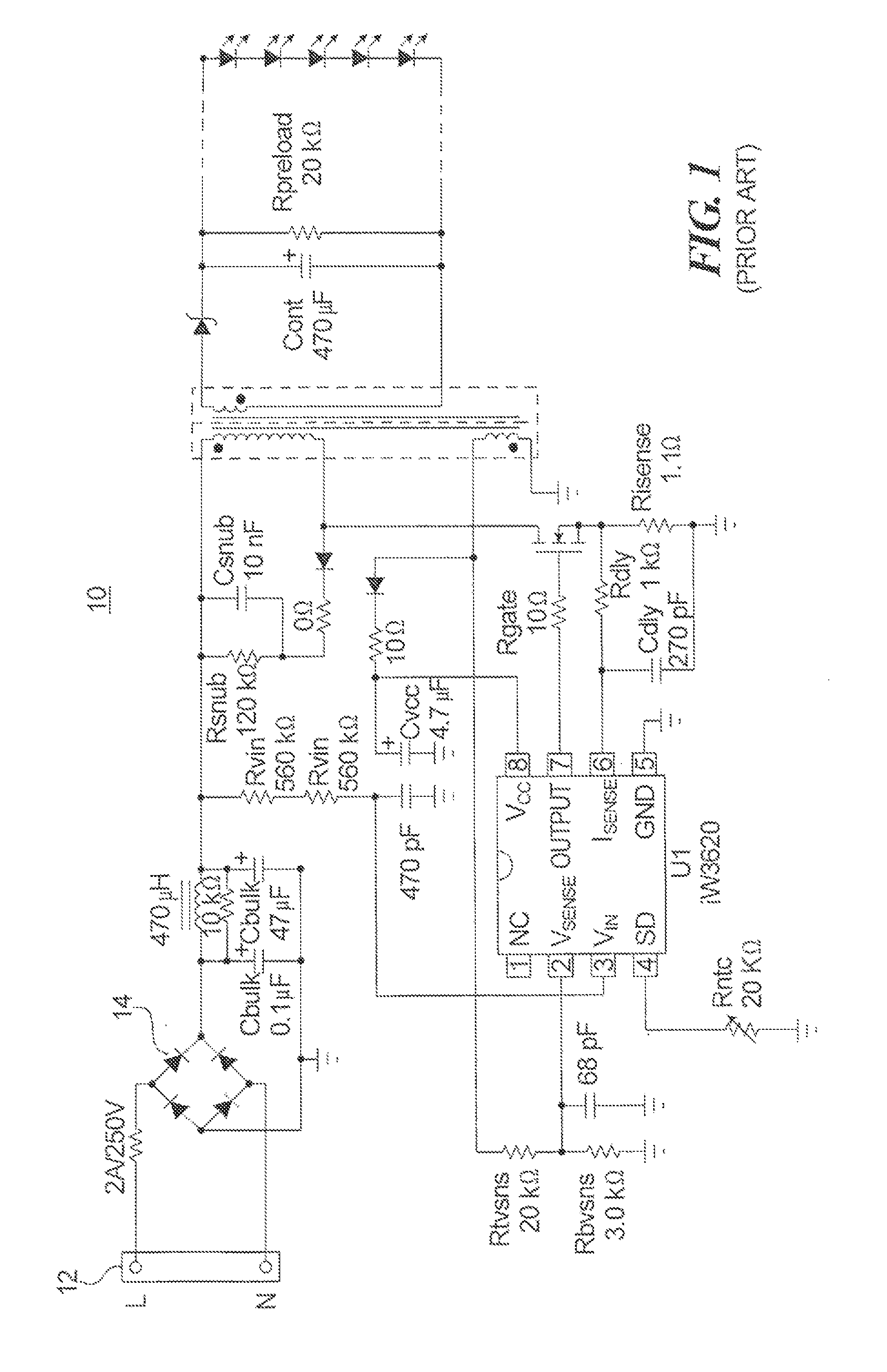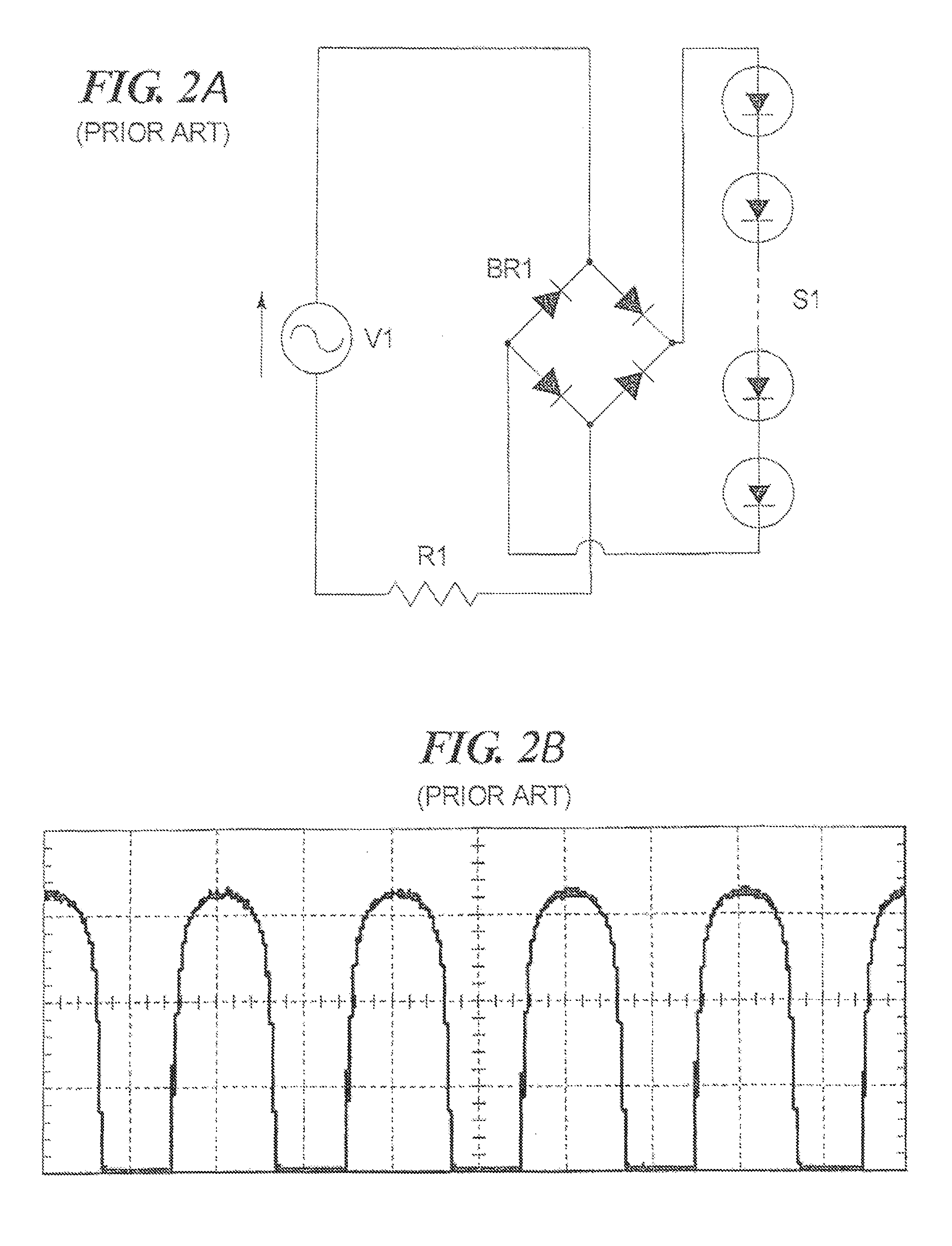Method and circuit for driving light-emitting diodes from three-phase power source
a technology of light-emitting diodes and driving circuits, which is applied in the direction of electroluminescent light sources, electric lighting sources, and use of semiconductors. it can solve the problems of complex and bulky circuits, ac-dc drivers such as the one, and the limited lifetime of such circuits
- Summary
- Abstract
- Description
- Claims
- Application Information
AI Technical Summary
Benefits of technology
Problems solved by technology
Method used
Image
Examples
Embodiment Construction
[0045]FIG. 3 is a circuit diagram of a first embodiment of three-phase LED driving circuitry in accordance with the present invention. Diodes D1 through D6 form a three-phase rectifier, connected to inputs at which the three phases L1, L2 and L3 from a three-phase power source are supplied to the driving circuitry. The three-phase rectifier formed by the diodes D1 through D6 converts in the incoming signals L1, L2, and L3 into a DC voltage, which is applied across a string S1 of light emitting diodes. A resistor R1 limits the current through the LED string S1.
[0046]The light output from the LEDs in FIG. 3 is shown as a waveform in FIG. 4. As can be seen from FIG. 4, there is no off-time. Instead, there is a ripple at a rate of six times the line frequency. In most countries, this flicker is at 300 or 360 Hz, which theoretically cannot be perceived. The efficiency of the circuit shown in FIG. 3 is approximately 85%. Because only the resistor R1 is used to limit the current to the LED...
PUM
 Login to View More
Login to View More Abstract
Description
Claims
Application Information
 Login to View More
Login to View More - R&D
- Intellectual Property
- Life Sciences
- Materials
- Tech Scout
- Unparalleled Data Quality
- Higher Quality Content
- 60% Fewer Hallucinations
Browse by: Latest US Patents, China's latest patents, Technical Efficacy Thesaurus, Application Domain, Technology Topic, Popular Technical Reports.
© 2025 PatSnap. All rights reserved.Legal|Privacy policy|Modern Slavery Act Transparency Statement|Sitemap|About US| Contact US: help@patsnap.com



